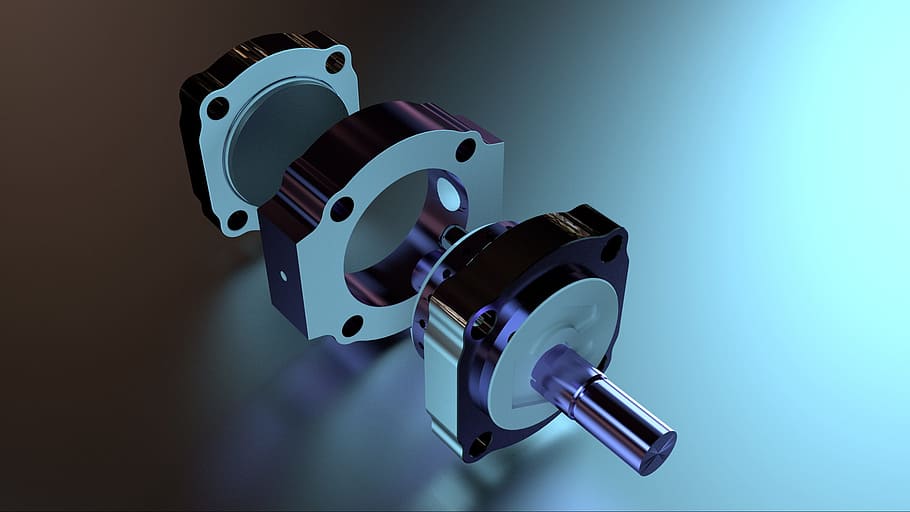Hydraulic Motors Selection Guide: Varieties, Features, Functions
페이지 정보

본문

Working speed is expressed in revolutions per minute, or related terms. Working temperature is the fluid temperature range the motor can accommodate. Minimum and maximum operating temperatures are dependent on motor internal element materials, and may range enormously between products. Energy that the motor is capable of delivering depends on the stress and move of the fluid by the motor. Hydraulic techniques are also utilized in some cases to function auxiliary constructions (like cranes and hatches). Displacement is the basis of hydraulic pumps. Hydraulic pumps have two varieties of gear, the driver or energy gear, and the driven or idler gear. Each of these gears mesh together. A driving shaft transmits power from the electric motor to the driver gear. If the driver gear begins rotating, then the driven gear strikes with it as nicely.
The commonest three-manner valves in hydraulics are ball valves, cartridge valves and stackable solenoid valves (like ISO 4401 commonplace). Ball valves may come to thoughts for some while you suppose about a three-means valve. They encompass a three-ported body, solid brass for low stress use or machined steel for top strain operation. They're theoretical figures to indicate the torque out there at the motor shaft. They assume no mechanical losses. Running torque is a share of its theoretical torque. It considers some loss and inefficiency. There are several types of hydraulic motors. The next are some of the most typical. In all circumstances, a pump pressurizes a liquid (normally an oil) to move a vane, gear or piston, which then moves a load. Piston pumps could be additional categorized into two types: axial piston pumps and radial piston pumps. Axial piston pumps have pistons which can be arranged in a circular sample and reciprocate parallel to the cylinder’s axis. Radial piston pumps have pistons that are organized radially and reciprocate perpendicular to the cylinder’s axis.
Let’s start by diving into the basic rules that enable these pumps to operate efficiently and reliably. A hydraulic pump, irrespective of its particular design or variant, operates based on a number of foundational principles. Making a Vacuum: The first step in the hydraulic motion of any pump involves making a vacuum at its inlet. This vacuum is essential for drawing hydraulic fluid from the reservoir, serving as the starting point of the pump’s operation. Displacement of Fluid: Central to the hydraulic pump’s operation is the displacement of fluid. Our workforce gives 24/7 emergency repair services to restore your hydraulic cylinder. As an ISO 9001:2015 certified firm, we use the latest in high quality management and slicing-edge restore techniques to diagnose an issue and supply complete repairs. Part of high quality repair services is an in depth failure report. We fastidiously examine your cylinder to offer an evaluation of the harm. Most points are merely attributable to routine use, however some may be indicators of improper set up or use. Generally, this materials is relatively cheaper than most other materials and therefore will also translate into lower priced filter housing. It may also withstand comparatively higher pressure ranges. Nonetheless, its use will be significantly diminished when the ratio of carbon is higher than steel. This may cut back the melting level and the effectivity of joint welding. This steel grade is composed of 10% nickel, 16% chromium and 2% molybdenum.
Hydraulics use pressurized liquids and fluids to generate and switch energy, moving liquids by tubes, actuators, filters, and pressurizers to assist move and activate automated parts and mechanisms. Hydraulic techniques are incessantly used in heavy construction functions. Hydraulic pumps are powered by large tools like bulldozers, cranes, and diggers to pressurize incoming fluids, which in turn put arms, blades, and lifting devices in movement. Industrial corporations also use hydraulic energy to function robotic arms, lathes, and presses. Wilson's providers transcend supplying and putting in tools.
- 이전글7 Helpful Tricks To Making The Most Of Your Mid Sleeper Bunk Beds 24.10.13
- 다음글Is It Time To talk More ABout Http //dl.highstakesweeps.com Login? 24.10.13
댓글목록
등록된 댓글이 없습니다.

